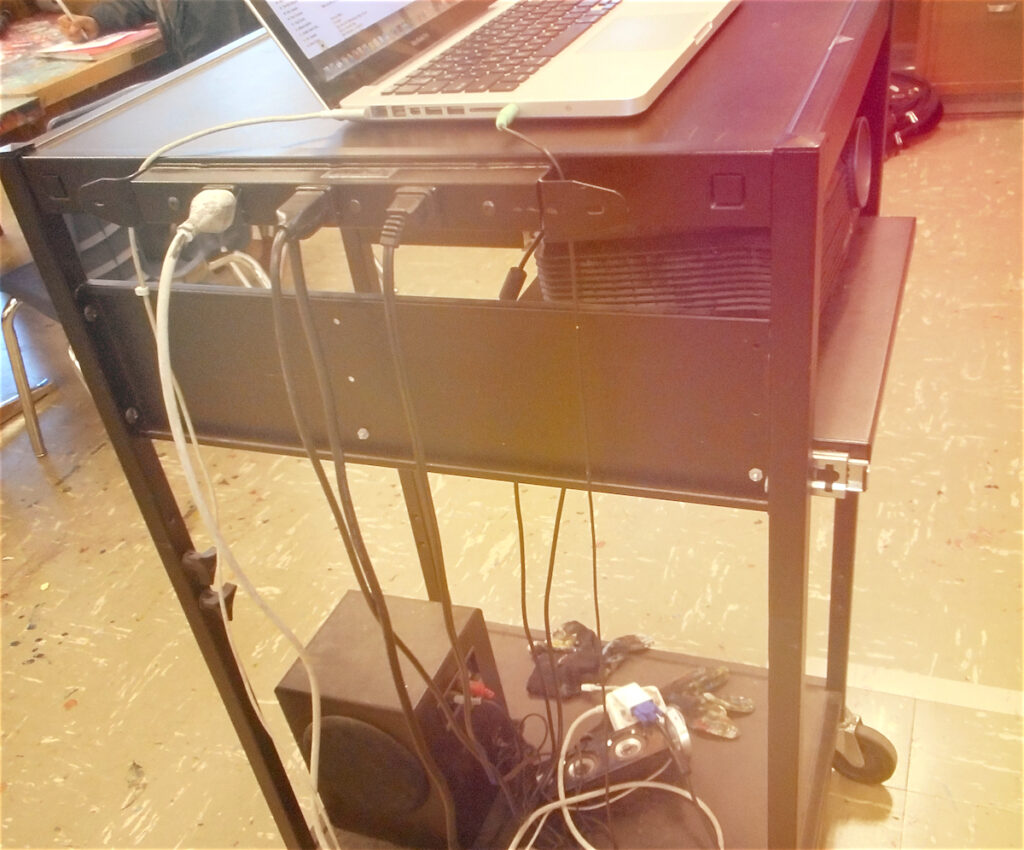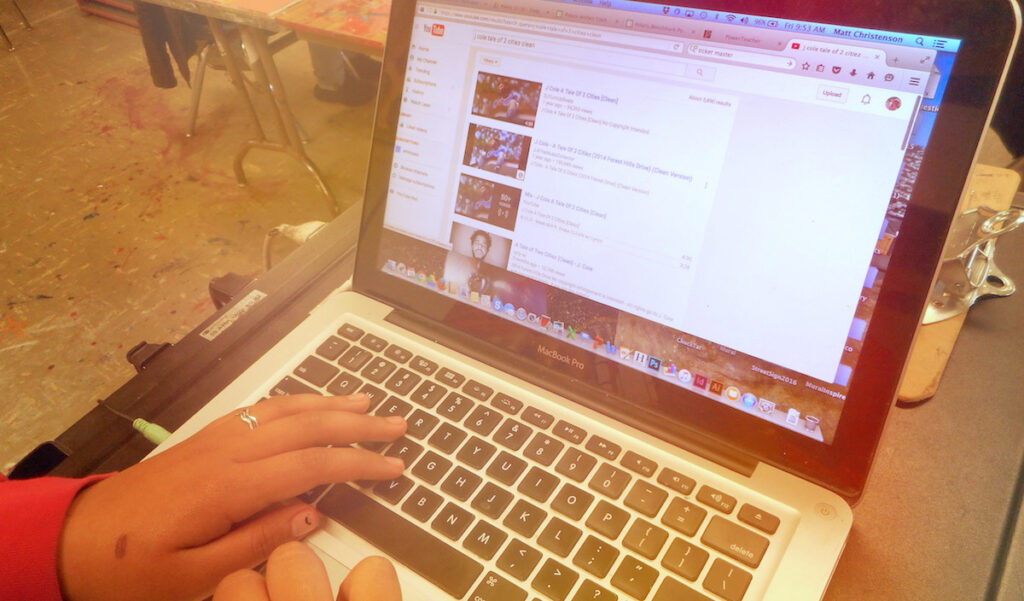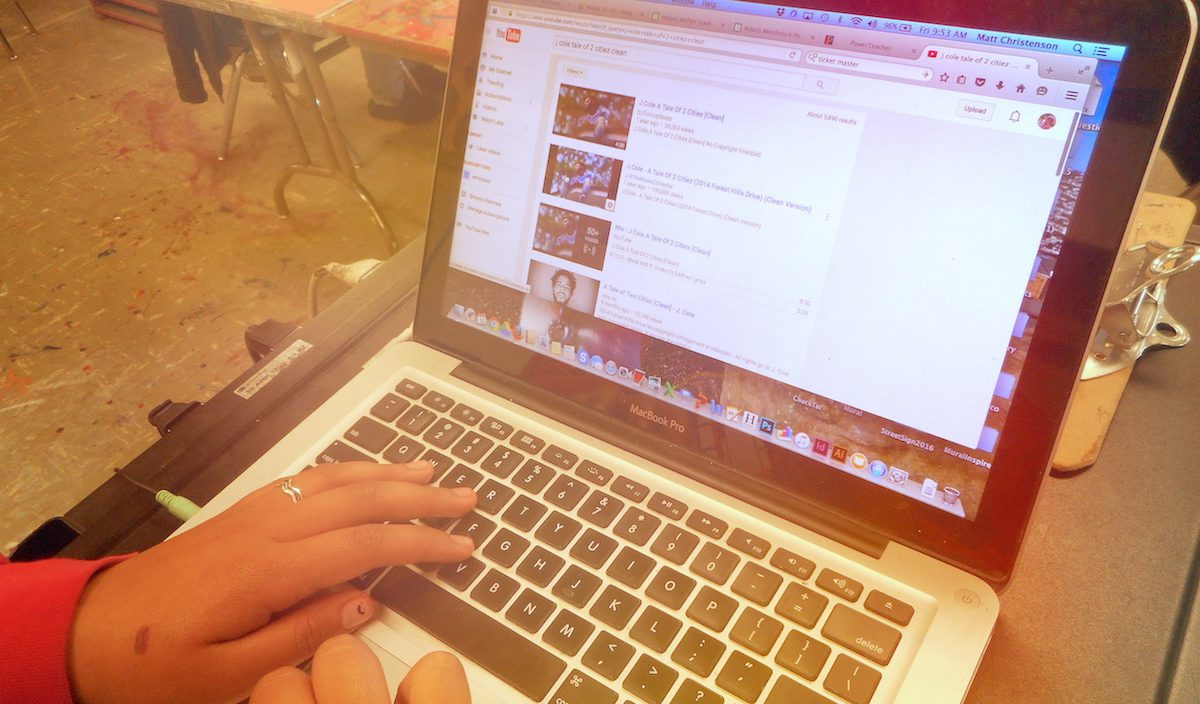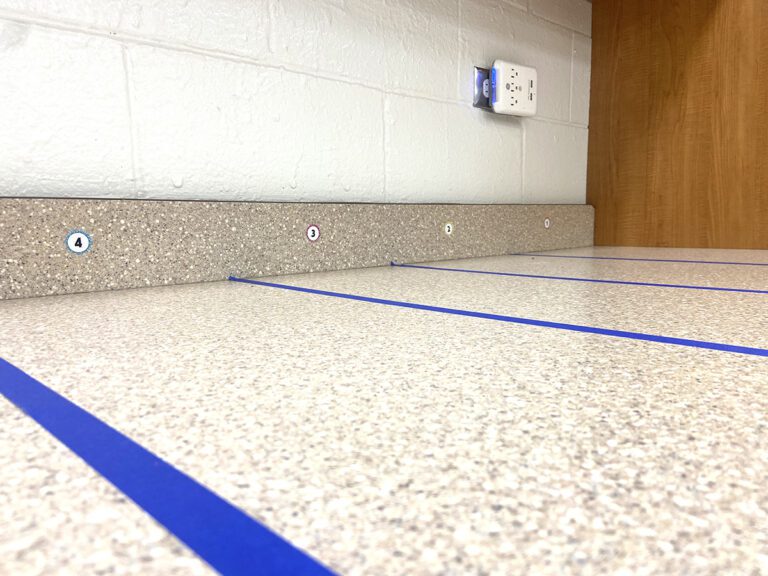Other than playing on cell phones, I can’t think of anything students love more than listening to music. I wish I could count the number of times I have heard students proclaim, “I can’t focus without music. Can we please listen to some music?” If your school is like mine, all electronic devices, including headphones, are not allowed during class time. So how can we, as educators, use music to motivate our students and also to create serious leverage for classroom management? The answer is to implement The Music List!
What is The Music List?
The Music List is a classroom management strategy I use in my high school art room, but you could certainly adapt it for middle schoolers or even younger students. It allows all students to have a say in the music played during class while making sure the selections are appropriate for school. Here’s how it works.
Music List Logistics
There are some important materials and implementation strategies needed in order for The Music List strategy to be successful.
Materials

- A Laptop or Cell Phone with Internet Access
The most important aspect of The Music List is that students choose the songs. Almost any song students want to play can be found on YouTube (and that includes the radio-edit versions). As long as you have an electronic device that can search the Internet, you have a source for music. - Speakers
Speakers that can amplify the music throughout your classroom are neither enormous nor expensive. Any basic set of portable speakers is fine. Make sure they can hook up to the auxiliary port on your electronic device.
Implementation Strategies
Choosing Students
The key to making this work is that no music is played until all students are actively engaged and working. At that time, I call out “Music List!” which alerts students that it’s time to select the songs for the day.
In my classroom, I have students raise their hands and rotate around the room calling on students to add to a master list we keep on the board.

However, you could have students write their own names down as they enter the room or pull names from a hat as well. There are many ways to go about it. Just make sure you have a fair system in place and communicate it well to your students to offset complaining.
Choosing (Clean) Songs
Giving students the power to choose the songs for the day helps develop a positive and empowering classroom environment. However, sometimes students will want to play songs with profanity or inappropriate material. Of course, those versions of the songs are not allowed. Luckily, almost every song that students want to play has a clean, radio-edited version!

YouTube is a great resource for finding school-appropriate versions of songs. When searching, just type in “clean” after the artist and song name. In my room, if a student plays a song that includes profanity, I stop the song and that student loses his or her turn immediately. Students will test this at first, but after students start losing their turns, they figure it out.
Maintaining a Positive, Inclusive Atmosphere
There can be a dominant musical genre that the majority of students want to hear. Sometimes this creates pressure for students who don’t want to hear that genre of music. It must be made clear that all forms of music are important and valid or else The Music List will cease. If students complain, criticize, or pressure other student music choices, The Music List stops for the rest of the day.
3 Benefits of The Music List

The incorporation of The Music List has multiple benefits for student classroom culture. Not only can it be used to motivate engagement and work ethic, it can also be used as a tool to improve classroom management. Here are 3 ways The Music List strategy can benefit your classroom.
1. It increases student motivation and engagement.
It is essential students know listening to music is a privilege, not a right. Music is a reward for the class when every student is working and doing what they are expected to do. When waiting for the entire class to begin working before starting a music list, students will hold each other accountable. Students might ask for music, but I can look around the room and respond, “Not quite yet…not everyone is working.” Students will immediately help encourage and motivate any peer who is lagging to get it in gear.
2. It’s a powerful classroom management tool.
Students will become hooked on The Music List almost instantly. They will look forward to art class and think about what songs they want to play in advance. Because of the profound effect it has on students and the classroom environment, the music list can become a strong source of leverage. When students are rowdy and restless and I’m trying to get their attention, I can start taking time off their Music List. All it takes is to write “Lost Music Time” on the board and start making tally marks. Students will regulate each other.
3. It increases student self-esteem.
Music has a lot to do with identity, especially in adolescence. Being able to choose and hear songs students identify with stimulates a sense of belonging and active participation. Students may need to work up the courage to play a song for the entire class, and once that happens it can be a moment of personal transformation. I have seen students come out of their shells once they made the choice to play a song. This empowering experience can also help develop teacher-student relationships.
The Music List is the most potent form of motivation and leverage I have. It is relatively simple and students will regulate each other around it. As artists, many of us value the stimulation of our musical choices to enhance our practice. The same powerful potential can arise from a systemic, regulated use of The Music List.
What experiences have you had playing music during art class?
What questions or concerns come up when thinking about implementing a music list?
Magazine articles and podcasts are opinions of professional education contributors and do not necessarily represent the position of the Art of Education University (AOEU) or its academic offerings. Contributors use terms in the way they are most often talked about in the scope of their educational experiences.





